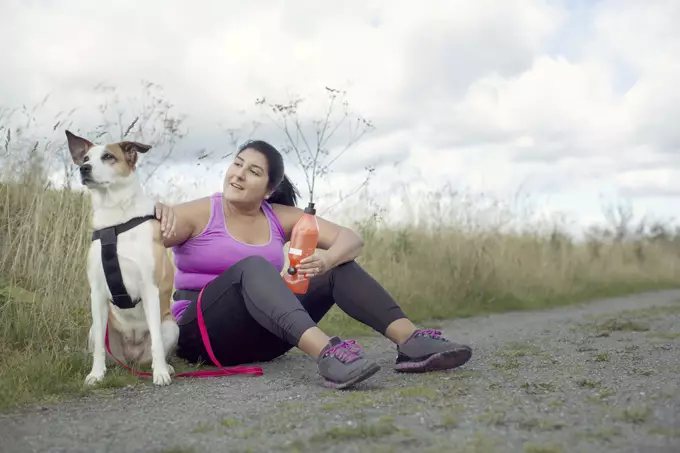Just as with humans, the prevalence of obesity among pets has reached alarming levels. This issue not only affects a dog’s physical appearance but can lead to severe health consequences, including diabetes, joint issues, and decreased life expectancy. Renowned Kansas State veterinarian Dr. Susan Nelson emphasizes the importance of regular exercise as a vital tool in combatting this epidemic. Not only can a rigorous exercise routine help maintain a dog’s ideal weight, but it also mitigates destructive behaviors stemming from pent-up energy.
Exercise is not just a means to physical fitness—it is an essential component of a dog’s overall well-being. Dogs that receive adequate physical activity are generally happier, more content, and display fewer behavioral issues. Therefore, it is crucial for pet owners to elevate the importance of exercise and integrate it into their dogs’ daily lives.
Commencing a physical activity routine can also profoundly strengthen the bond between a dog and its owner. Engaging in exercises together fosters a unique relationship, as dogs thrive on companionship and shared experiences. The loyalty and unconditional love that dogs offer only deepen in environments where they feel valuable and included in their owners’ activities.
Incorporating regular workouts can yield positive outcomes for both pet and owner. This activity provides pets with much-needed mental stimulation while allowing humans to enjoy the benefits of moving their bodies. Stronger relationships are cultivated when owners take the time to play and exert themselves physically with their dogs.
However, pet exercise routines should never be one-size-fits-all. The necessary amount and type of activity depend on various individual factors: the dog’s age, breed, general health condition, and even environmental conditions like weather should be considered. Consulting with a family veterinarian before implementing a new exercise routine is highly recommended to ensure that the selected activities align with your dog’s unique needs and capabilities.
For example, larger breeds typically require more vigorous exercise compared to their smaller counterparts. While medium and large dogs may thrive on long runs, smaller breeds might benefit more from shorter walks. Results from careful evaluation of a dog’s individual characteristics will yield better long-term health benefits and risk mitigation for injuries caused by overexertion.
The types of activities available to encourage physical fitness in dogs are numerous. Going for a run or walk is a classic approach, but certain breeds may prove better suited to different types of exercise. Medium to large breeds, particularly, can make excellent running companions, whereas smaller dogs may prefer leisurely strolls or sprinting over shorter distances.
Playing fetch or frisbee can also stimulate both physical and mental activity for dogs. However, caution should be exercised with energetic throws that may result in injury to the dog’s joints. Moreover, swimming offers a low-impact alternative that allows dogs to burn energy without the physical strain on their joints, making it a fantastic option during the warmer months.
Additionally, dogs require mental stimulation just as much as physical exercise. Breeds known for their intelligence, such as Border Collies, thrive on activities that challenge their cognitive faculties. Games like hide-and-seek and scent tracking can keep these dogs mentally engaged while also allowing them to expend energy.
While exercising dogs can lead to numerous health benefits, owners must be vigilant about their pets’ safety. Climate-related concerns are vital; dogs are vulnerable to both overheating and cold temperatures. Heat exhaustion can occur if a dog engages in vigorous activity during hot, humid conditions. Signs of overheating include excessive panting, a dark-red tongue, and thick saliva. Providing ample water breaks, particularly during warm weather, is essential to keep dogs hydrated and safe.
On the flip side, frigid conditions can also pose risks including frostbite or hypothermia. Short-coated and smaller breeds particularly may need protective gear to maintain body temperature while outdoors.
Moreover, young, developing dogs should not participate in high-impact activities until they reach a certain age to prevent long-term damage to their joints. Generally, large breed puppies shouldn’t engage in rigorous exercise routines until they are approximately 12 to 15 months old.
Timing around feeding is also paramount; dogs should ideally not be fed right before or after strenuous activity. This precaution helps to prevent bloating or torsion, particularly in deep-chested breeds. A safe window would be to refrain from feeding one hour prior to or after any rigorous exercise.
As a loving pet owner, prioritizing physical and mental stimulation through consistent exercise not only enhances your dog’s longevity and happiness but also fortifies the profound bond shared between you and your furry companion. Now is the time to take action in fostering a healthier lifestyle for your pet, ensuring they thrive both physically and emotionally.

